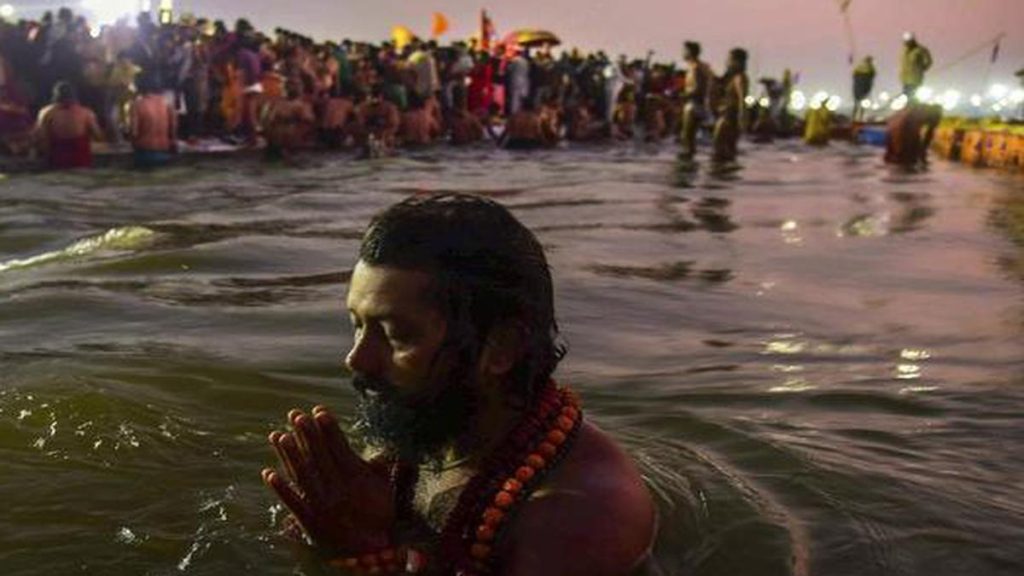Some of the links in this article are "affiliate links", a link with a special tracking code. This means if you click on an affiliate link and purchase the item, we will receive an affiliate commission.
The price of the item is the same whether it is an affiliate link or not. Regardless, we only recommend products or services we believe will add value to our readers.
By using the affiliate links, you are helping support our Website, and we genuinely appreciate your support.
The Mahakumbh Mela of 2025, held in the sacred city of Prayagraj, India, will forever be remembered as a historic event that transcended borders, cultures, and religions. Amidst the gathering of millions of devotees, pilgrims, and curious travelers from every corner of the world, the Mahakumbh emerged as a shining example of unity, meticulous planning, and spiritual harmony. Against all odds, the event unfolded seamlessly, without major mishaps, leaving an indelible mark on the hearts of those who witnessed it.
A Confluence of Cultures and Faiths
The Mahakumbh Mela, often described as the largest peaceful gathering on Earth, is a centuries-old tradition rooted in Hindu spirituality. However, the 2025 edition was unlike any other. For the first time, the Kumbh became a truly global phenomenon, attracting not only Indian devotees but also people from over 150 countries. From Japan to Brazil, from Nigeria to Norway, individuals of diverse nationalities, faiths, and cultures converged on the banks of the holy Sangam—the confluence of the Ganges, Yamuna, and mythical Saraswati rivers—to partake in this spiritual extravaganza.
The sight of Buddhist monks meditating alongside Sufi saints, European yoga enthusiasts practicing asanas beside Indian sadhus, and African drummers blending their rhythms with traditional Indian kirtans was a testament to the universal appeal of the Mahakumbh. The event became a melting pot of humanity, where differences dissolved, and the shared quest for spiritual enlightenment took center stage.
Meticulous Planning and Innovation
The success of Mahakumbh 2025 was no accident. It was the result of years of meticulous planning, innovative thinking, and collaboration between the Indian government, local authorities, and international organizations. Recognizing the scale of the event, the government deployed cutting-edge technology to ensure safety, cleanliness, and efficiency.
- Smart Infrastructure: The creation of a temporary “Smart City” on the banks of the Sangam was a game-changer. Solar-powered tents, Wi-Fi-enabled zones, and real-time crowd monitoring systems ensured that the massive influx of visitors was managed smoothly. Drones equipped with AI-powered cameras provided live updates on crowd density, enabling authorities to prevent overcrowding and respond swiftly to emergencies.
- Eco-Friendly Initiatives: In a bid to protect the fragile ecosystem of the Ganges, the organizers implemented strict eco-friendly measures. Biodegradable utensils, waste segregation systems, and water purification plants were set up to minimize environmental impact. Volunteers from across the globe joined hands to clean the riverbanks, sending a powerful message of environmental stewardship.
- Cultural Integration: To cater to the diverse international audience, the Mahakumbh featured multilingual guides, cultural exchange programs, and interfaith dialogues. Visitors were introduced to the rich tapestry of Indian traditions, from classical music and dance to Ayurveda and Vedic philosophy. At the same time, international participants shared their own cultural practices, creating a vibrant atmosphere of mutual respect and learning.
A Triumph of Unity and Resilience
What truly set Mahakumbh 2025 apart was the spirit of unity and resilience displayed by everyone involved. Despite the challenges of managing such a colossal gathering, the event was marked by an overwhelming sense of cooperation and goodwill. Volunteers, security personnel, and medical teams worked tirelessly around the clock, ensuring that every visitor felt safe and welcomed.
The absence of major mishaps was a testament to the collective effort of all stakeholders. Advanced weather forecasting systems helped mitigate risks during unexpected rains, while a robust healthcare infrastructure ensured that medical emergencies were addressed promptly. The seamless coordination between local authorities and international agencies set a new benchmark for managing large-scale events.
A Legacy of Hope and Inspiration
As the Mahakumbh 2025 drew to a close, it left behind a legacy of hope and inspiration. For the millions who attended, it was not just a pilgrimage but a transformative experience that reaffirmed their faith in humanity. The event demonstrated that even in a world often divided by differences, it is possible to come together in peace and harmony.
The Mahakumbh also served as a reminder of India’s enduring spiritual legacy and its ability to embrace modernity without losing touch with its roots. By successfully hosting an event of such magnitude, India showcased its organizational prowess and its commitment to fostering global unity.
In the words of a French traveler who attended the Mahakumbh, “This was not just a gathering of people; it was a gathering of souls. I came as a stranger, but I left feeling connected to every person here, as if we were all part of one big family.”
Conclusion
Mahakumbh 2025 will be remembered as a milestone in human history—a moment when the world came together to celebrate the timeless values of faith, compassion, and unity. It proved that even in the face of immense challenges, humanity can rise above and create something truly extraordinary. As the echoes of the sacred chants fade and the waters of the Sangam return to their serene flow, the spirit of Mahakumbh 2025 will continue to inspire generations to come, reminding us that we are all part of one interconnected world.



